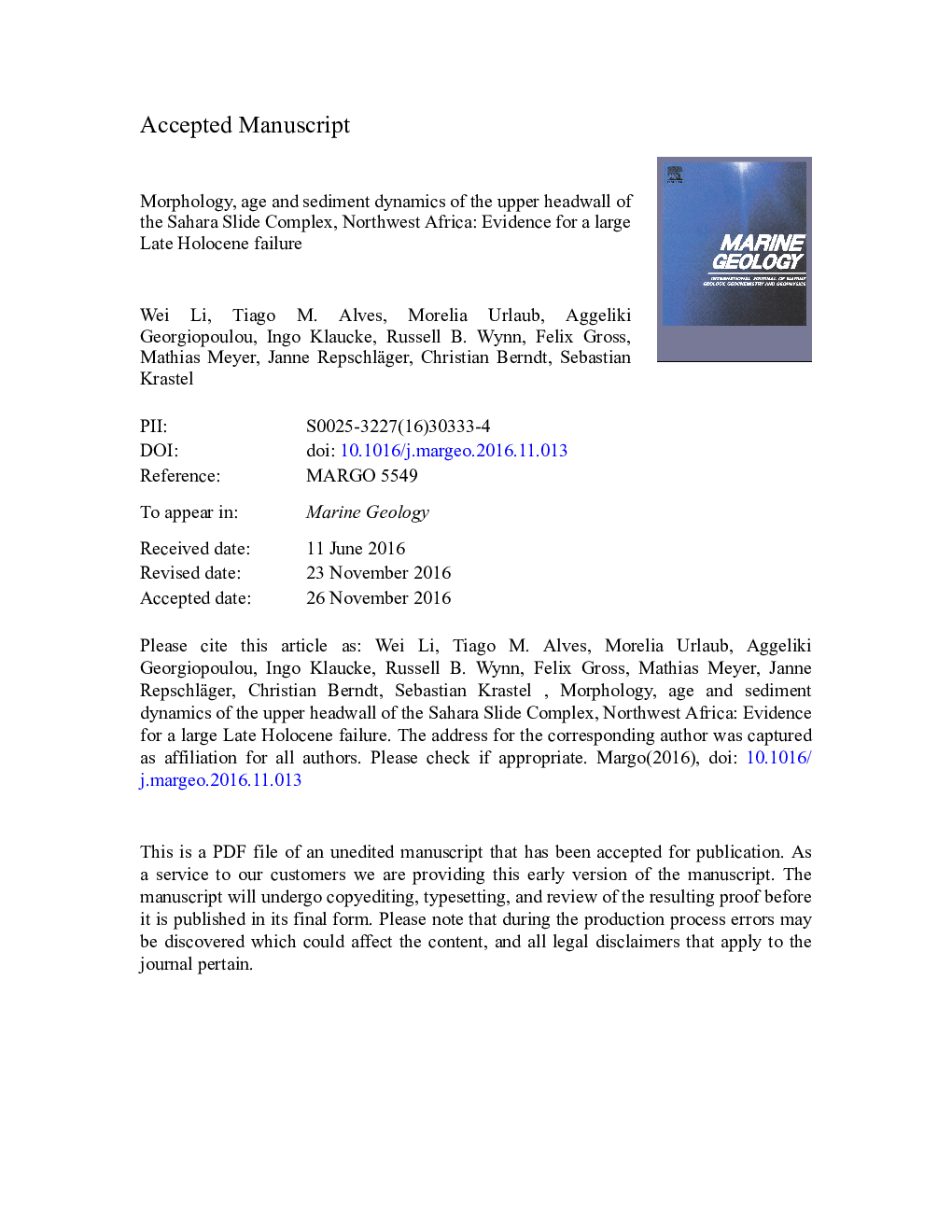| Article ID | Journal | Published Year | Pages | File Type |
|---|---|---|---|---|
| 8912090 | Marine Geology | 2017 | 45 Pages |
Abstract
The Sahara Slide Complex in Northwest Africa is a giant submarine landslide with an estimated run-out length of ~Â 900Â km. We present newly acquired high-resolution multibeam bathymetry, sidescan sonar, and sub-bottom profiler data to investigate seafloor morphology, sediment dynamics and the timing of formation of the upper headwall area of the Sahara Slide Complex. The data reveal a ~Â 35-km wide upper headwall,opening towards the northwest, with multiple slide scarps, glide planes, plateaus, lobes, slide blocks and slide debris. The slide scarps were generated by retrogressive failure events associated with two types of mass movements: translational sliding and gravitational spreading. As a result of this evolution, three different glide planes (GP I, II, and III) can be distinguished approximately 100Â m, 50Â m and 20Â m below the seafloor. These glide planes are widespread and suggest failure along pronounced, continuous weak layers. Our data suggest an age of only about 2Â ka for the failure of the upper headwall area, a date much younger than that derived for landslide deposits on the lower reaches of the Sahara Slide Complex, which are dated at 50-60Â ka. The young age of the failure contradicts the postulate of a stable slope offshore Northwest Africa during sea-level highstands. Such an observation suggests that submarine-landslide risk along the continental margin of Northwest Africa should be reassessed based on a robust dating of proximal and distal slope failures.
Keywords
Related Topics
Physical Sciences and Engineering
Earth and Planetary Sciences
Geochemistry and Petrology
Authors
Wei Li, Tiago M. Alves, Morelia Urlaub, Aggeliki Georgiopoulou, Ingo Klaucke, Russell B. Wynn, Felix Gross, Mathias Meyer, Janne Repschläger, Christian Berndt, Sebastian Krastel,
